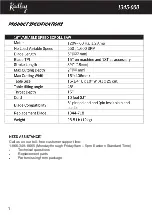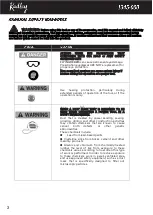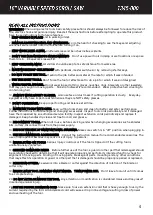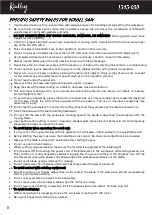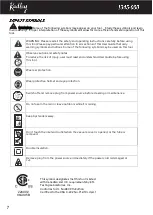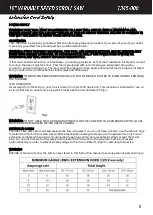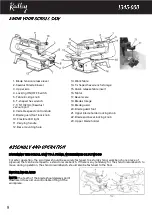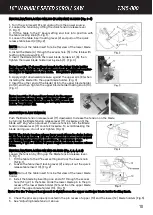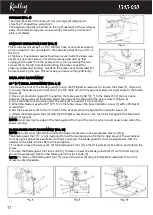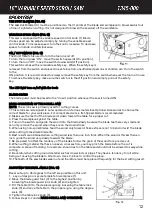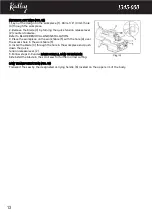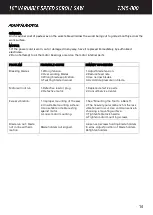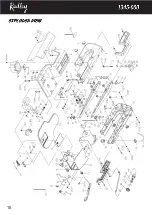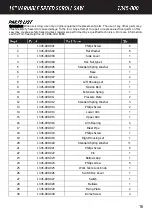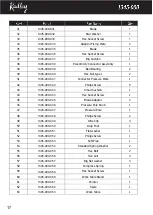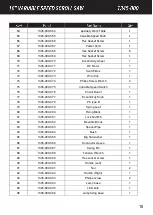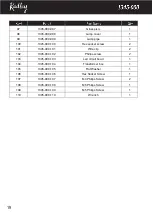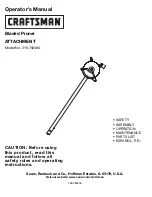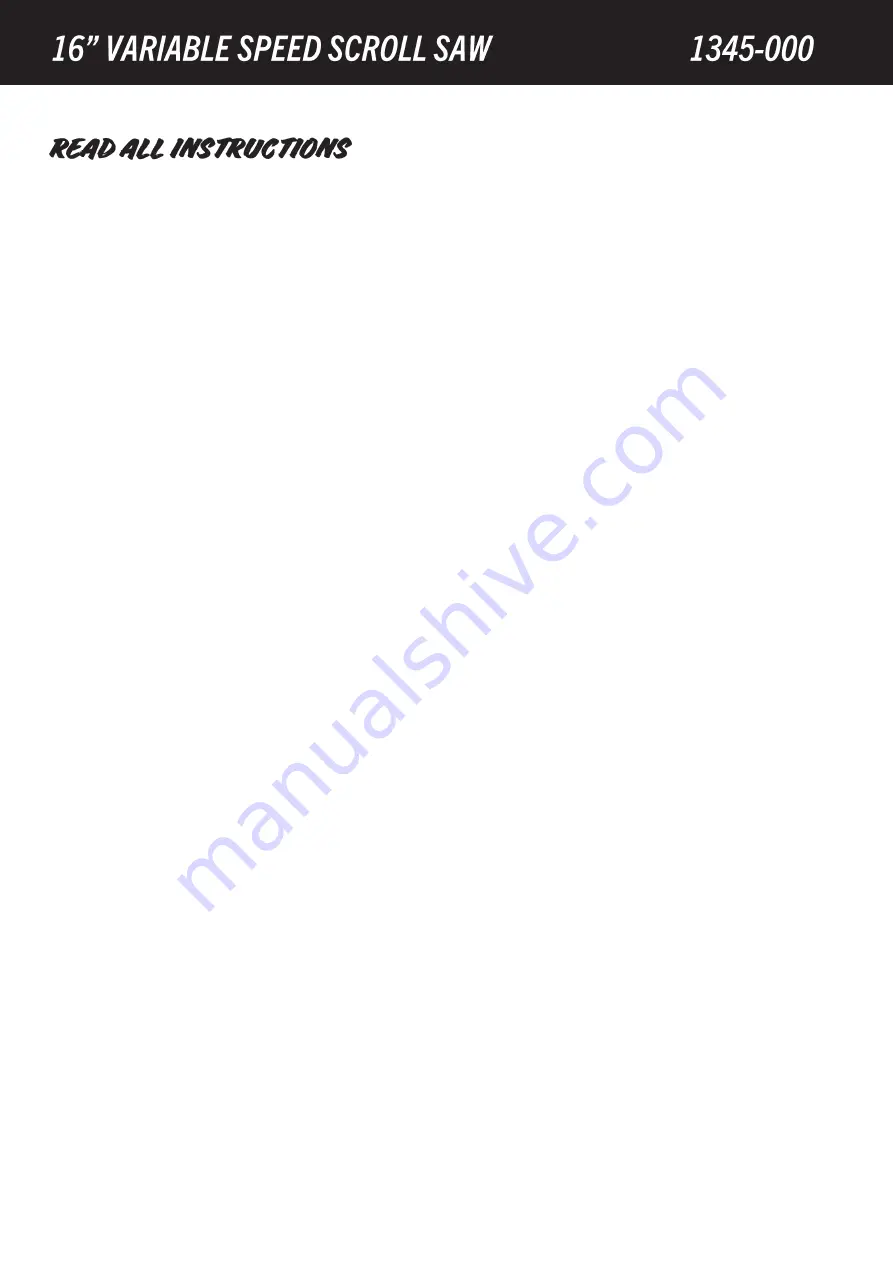
4
WARNING ! When using electric tools basic safety precautions should always be followed to reduce the risk of
fire, electric shock and personal injury. Read all these instructions before attempting to operate this product.
Save these instructions for future reference.
1. KEEP GUARDS IN PLACE and in working order.
2. REMOVE ADJUSTING KEYS AND WRENCHES. Form the habit of checking to see that keys and adjusting
wrenches are removed from the tool before turning it on.
3. KEEP WORK AREA CLEAN. Cluttered areas and benches invite accidents.
4. DON’T USE IN DANGEROUS ENVIRONMENTS. Don’t use power tools in damp or wet locations or expose
them to rain. Keep work area well lit.
5. KEEP CHILDREN AWAY. All visitors should be kept at a safe distance from work area.
6. MAKE WORKSHOP CHILDPROOF with padlocks, master switches or by removing starter keys.
7. DO NOT FORCE THE TOOL. It will do the job better and safer at the rate for which it was intended
8. USE THE RIGHT TOOLS. Don’t force the tool or attachment to do a job for which it was not designed.
9. WEAR PROPER APPAREL. Do not wear loose clothing, gloves, neckties, rings, bracelets or other jewellery
that may get caught in moving parts. Nonslip footwear is recommended. Wear protective hair covering to
contain long hair.
10. ALWAYS WEAR SAFETY GLASSES.
Also use face or dust mask if cutting operation is dusty. Everyday
eyeglasses only have impact-resistant lenses, they are NOT safety glasses.
11. DON’T OVERREACH. Keep proper footing and balance at all time.
12. MAINTAIN TOOLS WITH CARE. Keep cutting tools sharp and clean for better and safer performance.
Follow instructions for lubricating and changing accessories. Inspect tool cords periodically and if damaged
have them repaired by an authorized service facility. Inspect extension cords periodically and replace if
damaged. Keep handles dry,clean and free from oil and grease.
13. DISCONNECT TOOLS. When not in use, before servicing and when changing accessories such as blades,
bits, cutters, disconnect tools from the power supply.
14. REDUCE THE RISK OF UNINTENTIONAL STARTING.
Make sure switch is in “off” position when plugging in.
15. USE RECOMMENDED ACCESSORIES
.
Consult the instruction manual for recommended accessories. The
use of improper accessories may cause risk of injury to persons.
16. NEVER STAND ON TOOLS. Serious injury could occur if the tool is tipped or if the cutting tool is
unintentionally contacted.
17. CHECKED DAMAGED PARTS
.
Before further use of the tool, a guard or other part that is damaged should
be carefully checked to determine that it will operate properly and perform its intended function-check for
alignment of moving parts, binding of moving parts, breakage of parts, mounting and any other conditions
that may affect its operation. A guard or other part that is damaged should be properly repaired or replaced.
18.
DIRECTION OF FEED
. Feed work into a blade or cutter against the direction of rotation of the blade or
cutter only.
19. NEVER LEAVE TOOL RUNNING UNATTENDED. TURN POWER OFF. Don’t leave tool unit until it comes
to a complete stop.
20.
DO NOT ALTER OR MISUSE THE TOOL
. Any alteration or modification is considered misuse and may result
in serious personal injury.
21.
USE THE PROPER EXTENSION CORD
. Make sure to use an extension cord that is heavy enough to carry the
current required by the tool. An undersized cord will cause a drop in line voltage, resulting in loss of power
and overheating of the tool.


